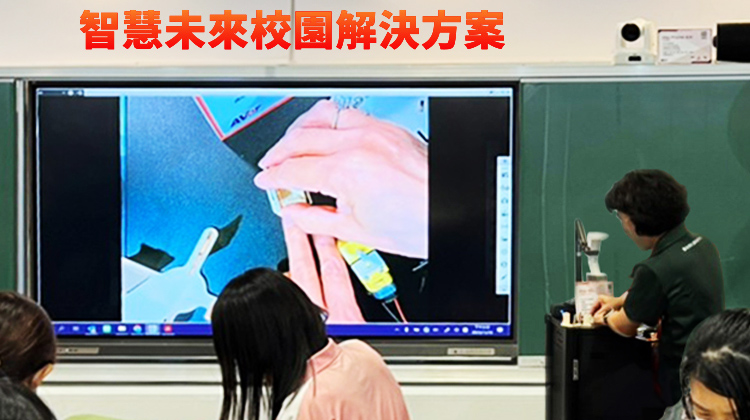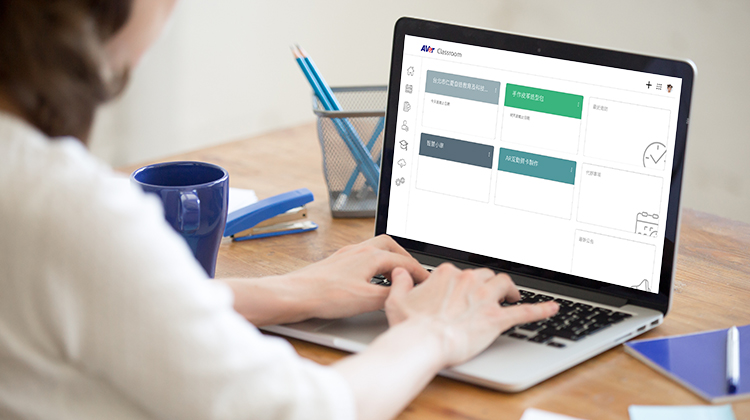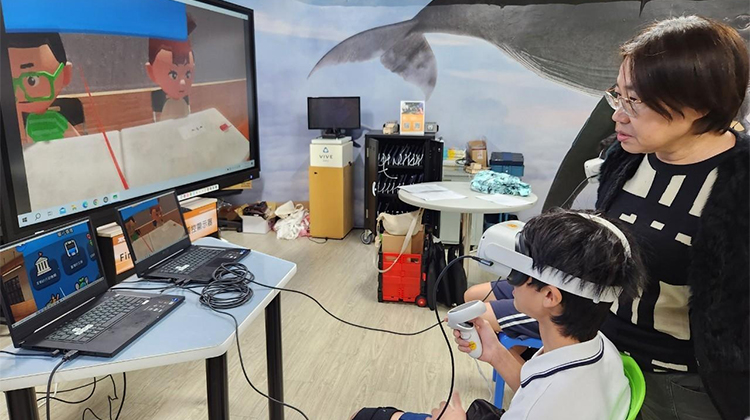In the last article, we saw how teachers became aware of the important role of technology in teaching and the pressures teachers face in the classroom. In this article, we’ll learn from Director Li Mei Huei, who will share her best tools to empower her lessons and discover original ways to use technology while teaching.
Q: What do you consider to be the best tools teachers use for teaching?

At RenAi, almost every single teacher uses the visualizer, and everyone loves it. It is extremely useful with digital annotation: writing annotations on the screen means you don’t have to dirty the pages of the original teaching material. The angles on my AVer visualizer are extremely flexible and accommodate a variety of scenarios, such as showing a lab setup and procedure or showcasing students’ notes. Sometimes students will write the wrong term and other students won’t hesitate to tell them that they made a mistake! Correcting mistakes is also a part of learning, so the visualizer is a really special tool. What’s great is there are so many ways you can use it, and sometimes my students are the ones who come up with how I can utilize the machine: they particularly enjoy using it to help correct their homework assignments. Because some AVer visualizers and cameras also have auto tracking capabilities that track people, students about to present will get excited and do funny things to steal the camera spotlight away from teachers. These are all cute things students do and help make the classroom full of laughter.
As for presentation tools, I use the smart board very often due to its ease of use. Often I also use different presentation software, a lot of which are moving to the cloud, like PowerPoint, Google Slides, and Canva. Canva has a lot of great presentation design formats to choose from, which is why many of our teachers (and students) enjoy using the platform when sharing information. For video platforms, our teachers enjoy using Google Classroom because everyone has a Google account and uses Google Drive, integrating many different functions into one account. Smarttech’s Lumio is a great tool for educators because it incorporates games into lessons for single and multiple learners, especially helpful during remote education because students can get fatigued if things aren’t changed up when staring at the same screen all day. AVer’s CaptureShare is also one of the software I use all the time since it works seamlessly with AVer visualizers, helping teachers annotate and make concepts clear to students.

Education platforms made by the Executive Yuan, the MoE, and Taipei’s CooC-Cloud other regional governments are all great learning resources that are being developed by different branches of Taiwan’s government. They cover a wide range of subjects from 1st to 12th grades, often with bite-sized video lessons that act as a great preview of a concept. I personally ask my students to go through the physics and chemistry learning materials on the platforms and check how they fared on the checkpoint questions to assess their comprehension. All our teachers are hoping that the systems will soon incorporate the ability to process big data, provide diagnostics, and suggest learning paths for every student.
Next, we’ll do hands-on learning where students will use their tablets to do all kinds of things, like photographing scenes to keep a record, access internet resources, make calculations, perform a scientific simulation, present with Canva, and ask ChatGPT questions. Some students even asked if they could use their tablet as a scale to measure their body weight. I laughed and told them they’d better not! Through the teaching process, I ensure our students understand that social media and YouTube are not the only apps to use on their tablets.
One of my favorite tools, though, are definitely real-world labs. Once again taking my science class as an example: why is it that when my students measure the density of the same bottle of oil, everyone has a different answer? The reason is because oil is a mixture of different oils and substances, which affects its density. This also applies to other mixture substances like NaCl (aq), which when distilled, can still have other substances and factors that affect its density at the moment, such as temperature. That’s the kind of real-world science I emphasize in our classroom.
Q: RenAi has a lot of experience using edtech technologies like distance learning cameras, generative AI, and AR/VR technologies in the classroom. Why is Ren Ai so willing to pursue these edtech tools?

I think there are certain concepts that technologies are good at optimizing. The distance learning cameras and visualizers make it so simple to show everyone the steps of a lab. Generative AI helps us to quickly summarize and gather the most important points of materials (of course when used correctly). AR/VR is really good at illustrating concepts that we cannot easily show in the physical world. It would be hard to find a place without gravity in real life, but it’s much easier to find a VR experience of zero-gravity. There are also some chemicals that used to be allowed in the classroom but are now classified as being hazardous, so if technology could create a sense of smell while showing an experiment of these harmful chemicals, that would certainly be something, wouldn’t it? The exciting thing about technology is that the possibilities are endless, and our students become immensely creative using these technologies to create what they envision in their minds.
Q: Is there anything else you’d like to mention regarding education in this era?
Lately, our students have been winning so many awards in robotics that other students are feeling pressured! Our students have been placing in robotics competitions across the board, including dragon boat racing, sumo, bowling, and robot fighting, and these are only the ones that happened in last month. With so many extracurriculars, you’d think my students would do poorly in their exams, right? Well, I’m proud to say my students on average don’t get wrong more than two problems on their midterms and finals.
So, do edtech products increase teaching outcomes? I’d say the answer is a resounding yes. Once all teachers get on board, we are sure to see more students reaping the benefits. I really urge schools to gather the resources, and teachers to step out of their comfort zones to learn and utilize these great tools that will help their students reach unimaginable heights.